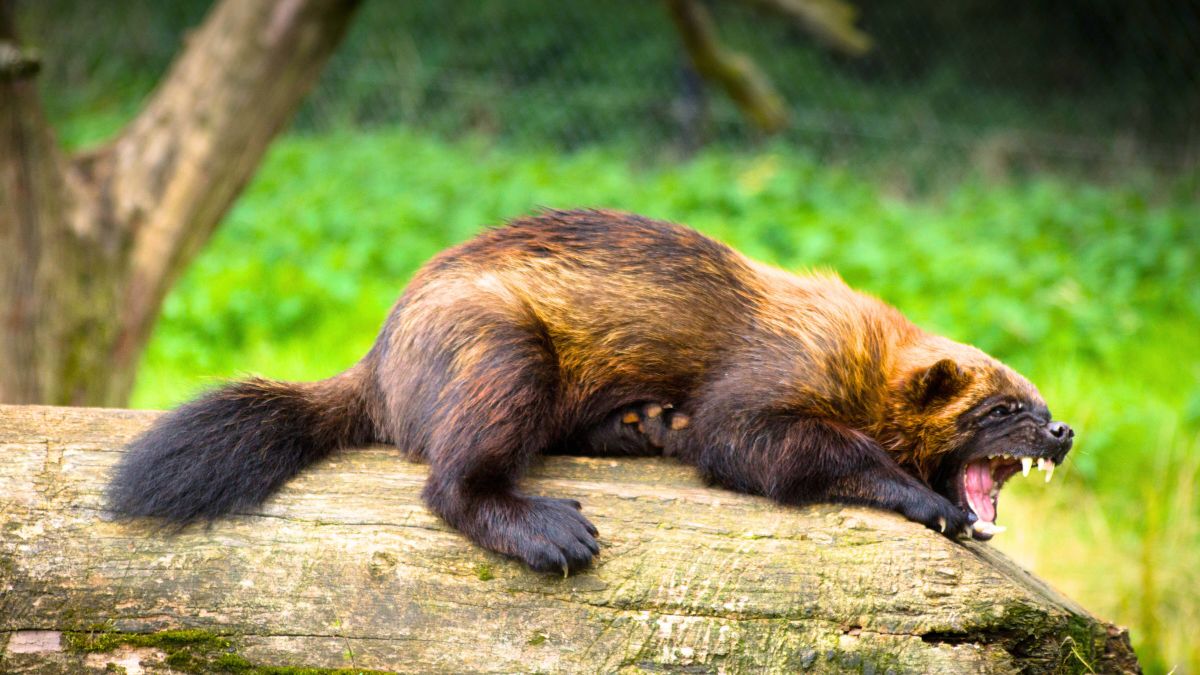The wolverine animal is one of nature’s most fascinating yet misunderstood creatures. Often mistaken for a wolf or a small bear, the wolverine (Gulo gulo) belongs to the Mustelidae family, which also includes otters, weasels, and badgers. Despite its relatively small size, the wolverine is known for its ferocity, strength, and resilience, making it a subject of awe for wildlife enthusiasts and researchers alike.
In this article, we’ll explore everything you need to know about the wolverine animal—from its habitat and diet to its behavior and conservation status.
What Is a Wolverine Animal?
The wolverine animal is a muscular, stocky mammal with a broad head, small eyes, and short rounded ears. It has a thick, oily fur that is highly resistant to frost, which helps it survive in some of the harshest climates on Earth. Wolverines are typically around 26–42 inches long (not including their tail) and weigh between 20–55 pounds, although males are generally larger than females.
Despite their bear-like appearance, wolverines are much closer genetically to weasels. Their scientific name, Gulo gulo, literally means “glutton,” which reflects their voracious feeding habits.
Habitat and Range
The wolverine animal is primarily found in the northern boreal forests, tundras, and alpine regions of the Northern Hemisphere. They are commonly seen in:
-
Canada
-
Alaska
-
Scandinavia
-
Russia
In the United States, small populations are found in the Rocky Mountains and the Cascades. Wolverines require vast territories and prefer remote, rugged areas far from human activity. Snow cover is particularly important, as it provides insulation for dens and helps store food.
Wolverine Animal Behavior
The wolverine animal is solitary by nature. These creatures are known for their incredible stamina, capable of traveling up to 15 miles in a single day while hunting or scavenging.
Some key behavioral traits include:
-
Territoriality: Wolverines are fiercely territorial and use scent markings to establish their domain.
-
Adaptability: They are excellent climbers and can even swim short distances.
-
Endurance: Wolverines are capable of surviving in extreme weather, often hunting or scavenging in temperatures as low as -40°F.
Despite their fierce reputation, wolverines are usually shy and prefer to avoid human contact.
What Do Wolverines Eat?
The wolverine animal is a carnivore and a highly opportunistic feeder. Its diet mainly consists of:
-
Small to medium-sized mammals (such as rabbits, marmots, and squirrels)
-
Birds
-
Fish
-
Carrion (the remains of dead animals)
During winter, wolverines rely heavily on scavenging because fresh prey is scarce. They often feed on the kills of larger predators like wolves and bears. Thanks to their strong jaws and sharp teeth, they can crush and consume frozen meat and bones, an adaptation crucial for surviving harsh winters.
Wolverine Animal Reproduction and Lifespan
Breeding season for the wolverine animal occurs during the summer months, typically between May and August. However, implantation of the fertilized eggs is delayed until late winter, a phenomenon known as delayed implantation. This ensures that the cubs are born when conditions are more favorable.
-
Gestation Period: After delayed implantation, the actual pregnancy lasts about 30–50 days.
-
Litter Size: Wolverines usually give birth to 2–4 kits in early spring.
-
Lifespan: In the wild, wolverines live about 5–13 years, while those in captivity can live up to 17 years.
Mothers create dens in deep snow to give birth and rear their young, offering the kits much-needed protection from predators and the cold.
Interesting Facts About the Wolverine Animal
Here are some fascinating facts about the wolverine animal:
-
Incredible Strength: Wolverines can take down prey much larger than themselves, including caribou and even injured moose.
-
Snow Lovers: They are among the few animals perfectly adapted to living year-round in snowy environments.
-
Strong Sense of Smell: Wolverines can sniff out prey or carrion buried under several feet of snow.
-
Famous in Pop Culture: The wolverine inspired the popular Marvel Comics character “Wolverine,” known for his toughness and fighting spirit.
Threats to the Wolverine Animal
Despite their fearsome nature, the wolverine animal faces numerous threats, including:
-
Climate Change: Reduced snowpack due to global warming threatens denning opportunities.
-
Habitat Loss: Logging, mining, and road construction fragment their habitats.
-
Trapping and Hunting: In some regions, wolverines are trapped for their fur or hunted.
Because of these factors, the wolverine is listed as a species of special concern in several areas and is considered vulnerable by the International Union for Conservation of Nature (IUCN).
Conservation Efforts
Several measures are being taken to protect the wolverine animal:
-
Protected Areas: Establishing wilderness reserves where wolverines can roam without human interference.
-
Research and Monitoring: Tracking wolverine populations using GPS collars and camera traps to better understand their needs.
-
Public Awareness Campaigns: Educating people about the importance of wolverines in maintaining healthy ecosystems.
In the U.S., there have been debates about listing the wolverine under the Endangered Species Act. Conservationists argue that action is necessary to prevent further decline.
Why Is the Wolverine Animal Important to Ecosystems?
The wolverine animal plays a crucial role in its ecosystem. As scavengers, they help to clean up carcasses, preventing the spread of disease. Their presence also indicates a healthy, intact wilderness, as they require large, undisturbed territories to thrive.
By maintaining the balance between predator and prey populations, wolverines contribute to the overall health and stability of their environment.
Conclusion
The wolverine animal is a testament to nature’s power, resilience, and mystery. Despite its tough exterior, it is vulnerable to the rapidly changing world brought about by human activities and climate change. Understanding and protecting this magnificent creature is not just important for its survival, but also for the health of the ecosystems it inhabits.
Whether you are a wildlife enthusiast, a conservationist, or simply someone curious about nature, the story of the wolverine animal is sure to inspire awe and respect.
